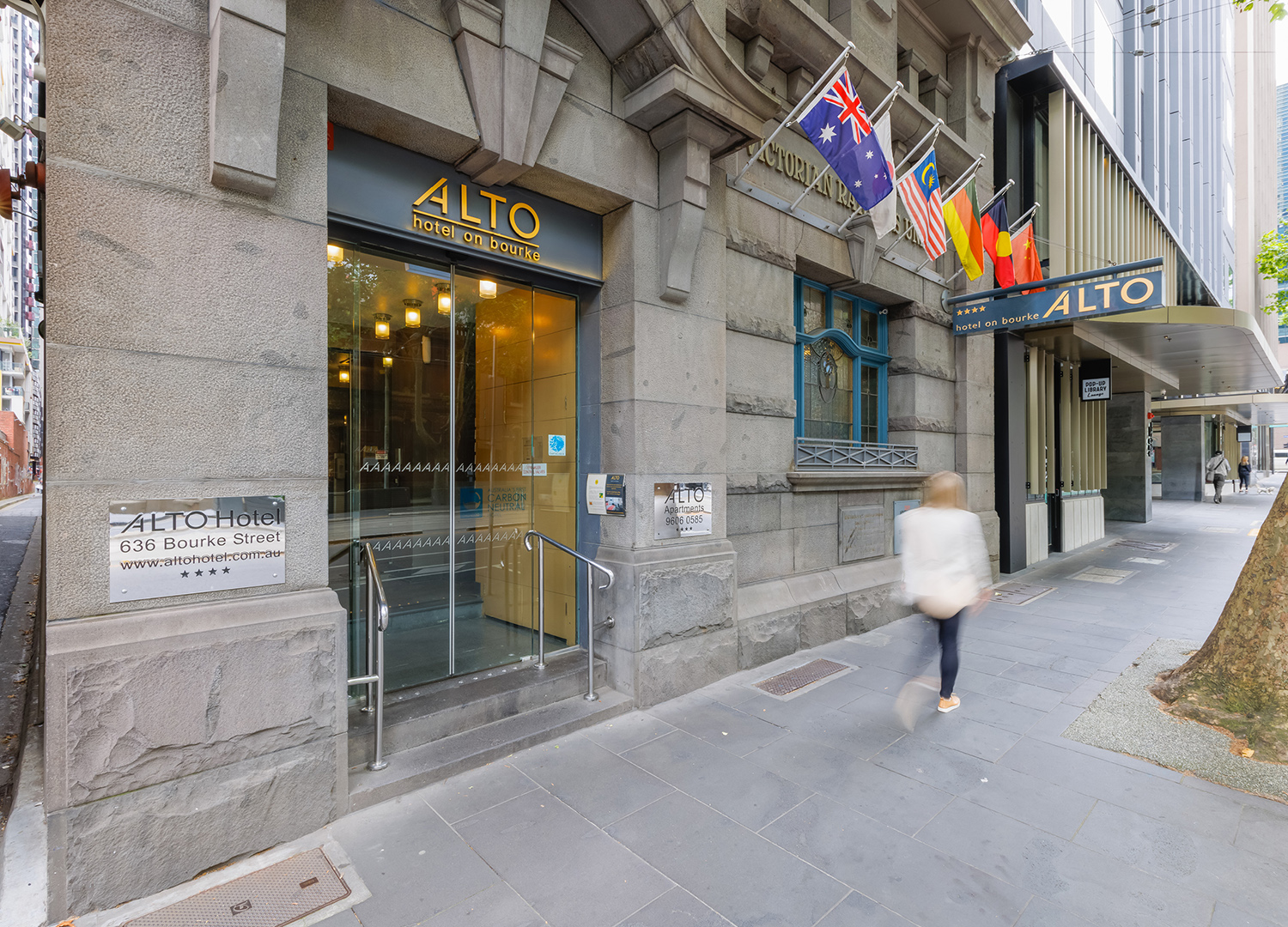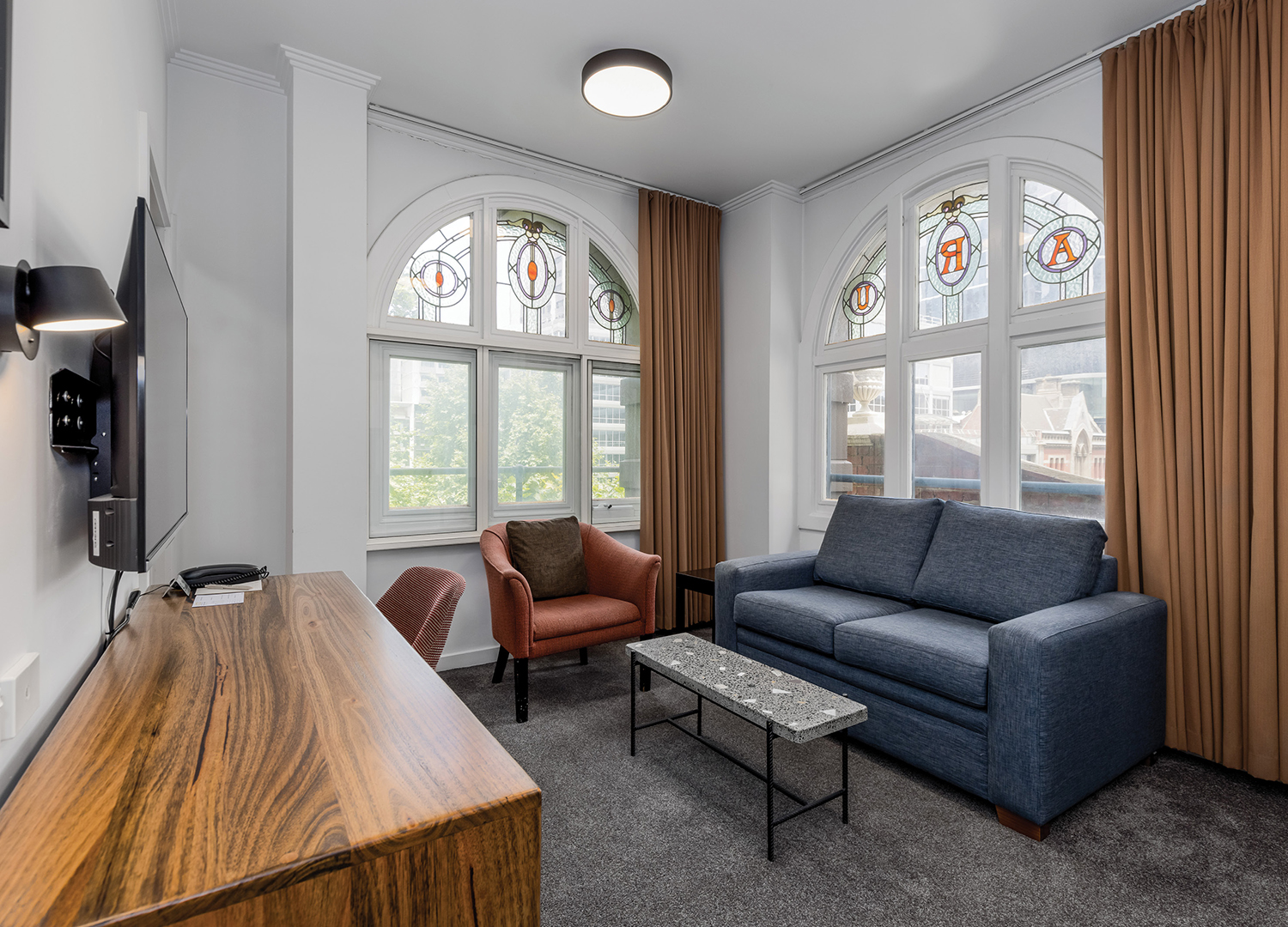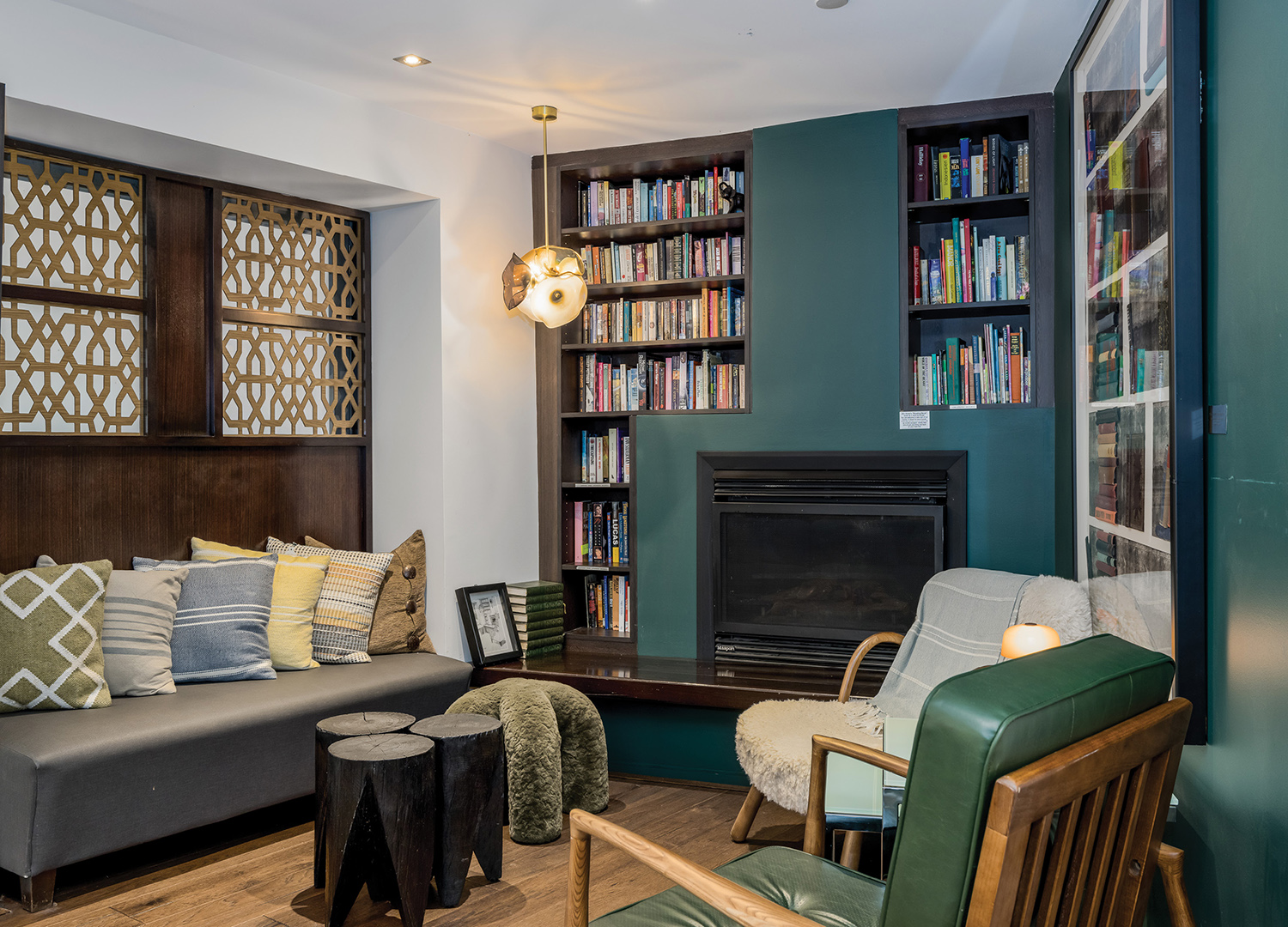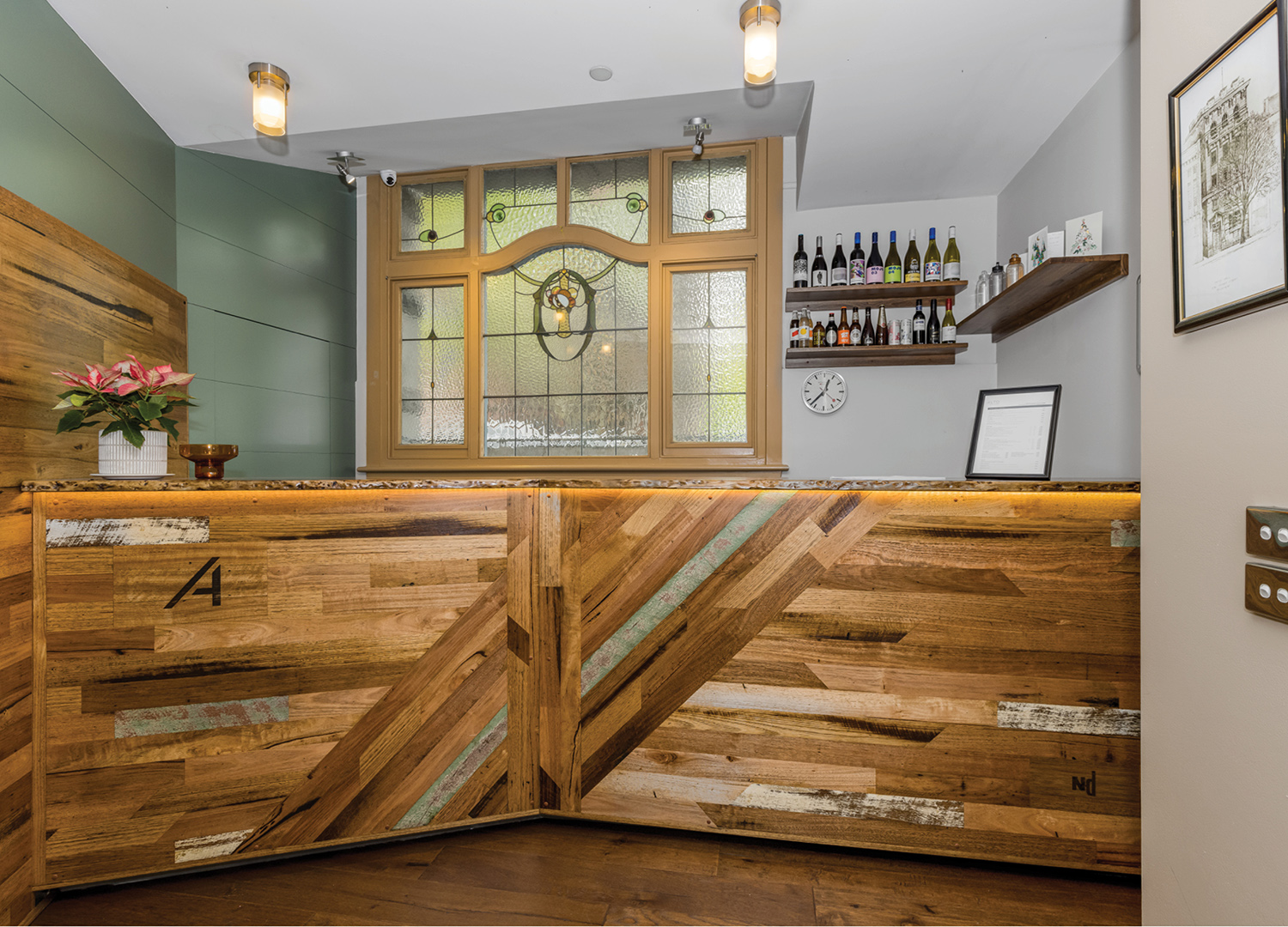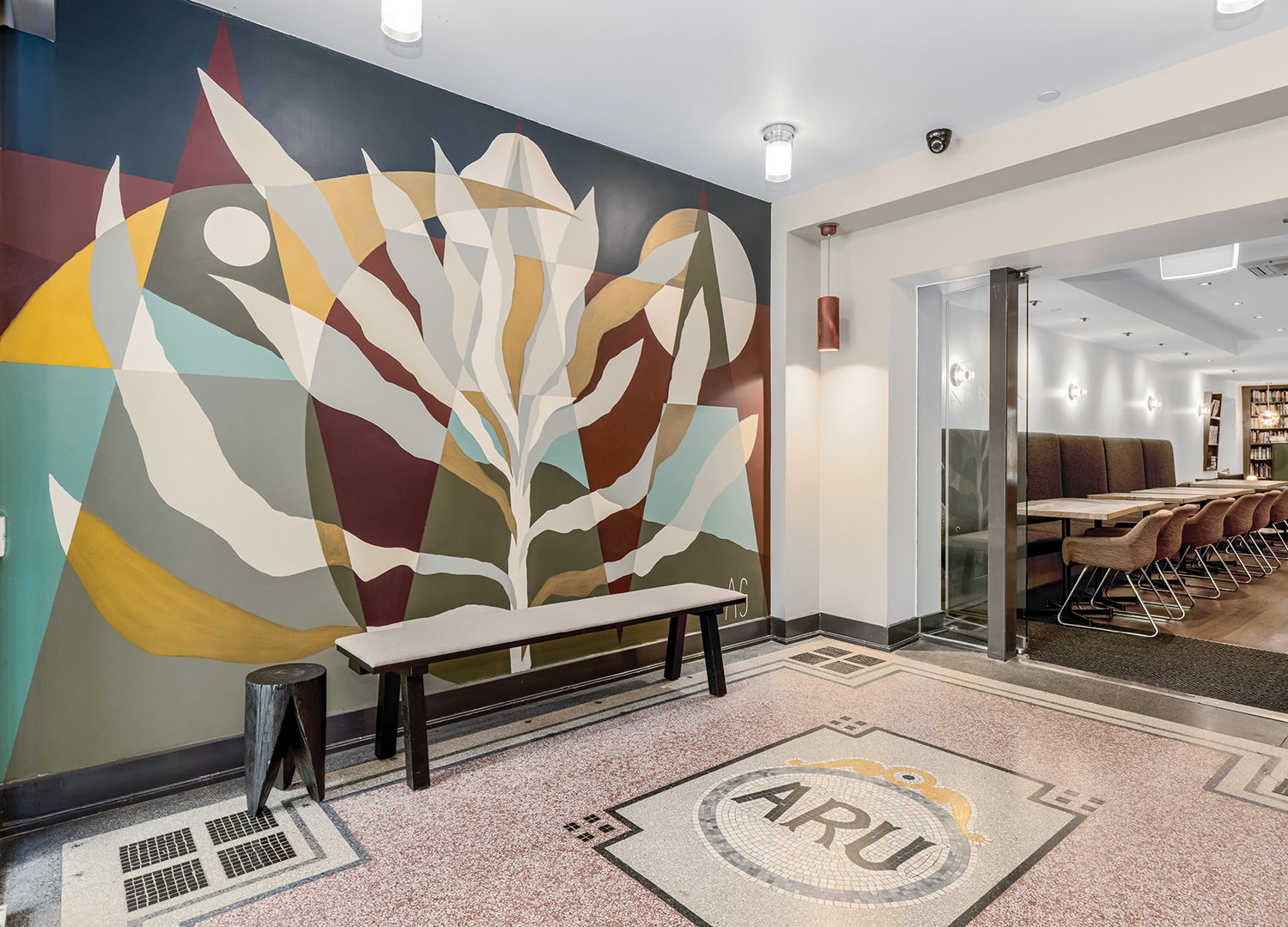
Sustainable Stays: Peek Inside this Heritage-Listed Melbourne Hotel
photos CHOICE HOTELS
Far from home and living out of a suitcase, making sustainable choices can sometimes be a challenge when you’re travelling. But maintaining your values while saying bon voyage is not only doable, it can be accessible and even luxurious if you know where to look. Located in the heritage-listed, former Australian Railway Union building, the Alto Hotel on Bourke Street in Melbourne’s CBD was Australia’s first carbon-neutral hotel and now has a focus on being sustainably responsible – with the boutique space boasting a raft of green initiatives both in the overall fit-out and across the everyday details of the guest rooms.
We caught up with the hotel’s general manager, David Doswell, to learn about how Alto Hotel is staying true to its sustainable roots while looking towards the future.
Tell us a little about the history of the Alto Hotel…
Originally, it was the Railways Hotel, built circa 1860, and in 1914, it was purchased by the Victorian Railways Union, demolished and rebuilt. The architect AEH Carleton was very well-known in Melbourne around that time and the building is a typical example of his style (neo-Baroque or Palazzo). The Alto Hotel is actually heritage listed because of that and because it still has so many of its original features, including the blue brick and leadlight windows outside, and the terrazzo floor in the foyer. I think it enhances the guest experience being in a building like this – that has a story, a bit of history.
As well as its history, the other thing that makes the Alto Hotel so special is its focus on sustainability. It was the first hotel in Australia to receive the EarthCheck Gold Certification and it was Australia’s first carbon-neutral hotel. Why is it such a central part of everything the hotel does?
When the location was purchased by new owner Ricardo Krauskopf in 1999, he imagined it as the leading environmentally friendly hotel in Australia. So when they started renovating in 2005, he set up all these initiatives.
All our water from the roof is stored in a tank downstairs that’s used in the toilets. Air conditioners all use inverter technology with a six-star energy consumption rating, and the units have movement sensors so when there’s nobody in the room, they’re not used. The windows are also double-glazed to help with heating and noise. We have the flow restricted to eight litres per minute for all showers. All those sorts of things were done back in 2006, taking sustainability into account even then.
It enhances the guest experience being in a building like this – that has a story, a bit of history.
As the new custodians of the Alto, the last thing we want to do is move away from what the hotel has always been about. As the general manager, this is an opportunity. Essentially, all the hard work has already been done for me, I’ve just come in and done some finishing touches.
What extra sustainable touches should guests look out for on a visit?
The restaurant, the lounge and the library have just been redone (the restaurant is halfway there) and in that renovation, we recycled as much as we could. The tables are the original tables; we kept the old banquette. We’ve changed 50% of the lights in the restaurant to LED now. We’ve worked with Five Mile Radius for some of our tables. The bookcases are made using recycled or local wood from Victoria. The cushions are made from recycled plastic bottles.
If I’m going to do anything, the first thing I’m going to look at is how can I do it locally. I’ve always tried to bring in more of a local aspect. It’s more sustainable with less of a carbon footprint, and I love working with local artists and businesses! We’ve worked with ND Furniture, a Melbourne furniture design company that uses recycled timber and Spacecraft Store for art and design. Our tea is from a local partner called Love Tea. And we’ve worked with Rooftop Honey Melbourne, since around 2011 or 2012.
If I’m going to do anything, the first thing I’m going to look at is how can I do it locally.
I spent a whole year trying to find toiletries that could work with the volume we needed and the budget that were also produced locally. It wasn’t so much the cost of the toiletries itself as the cost of bottles that blew everything out of the water. Botany Naturals had everything we needed: they produce here in Melbourne, the product comes in refillable bottles and it’s all made with native ingredients, like finger lime.
All of this, it wasn’t that hard. It was a no-brainer – I didn’t see any other way of doing it. It’s also much more fun. The bit I enjoy the most is telling people about these wonderful artists – people are interested!
WANT MORE SUSTAINABLE TRAVEL CONTENT? RIGHT THIS WAY!
It can often be hard to practise sustainability when we’re travelling. What are your tips for travellers?
The one thing that people can do is bring their own water bottles. We have our refilling station downstairs and refillable glass bottles in the guest rooms and we also plan to sell our own refillable travel bottles from reception. We want to encourage people to use tap water as opposed to plastic bottled water.
I can’t tell you the response from people. They love it because it’s accessible and easy for them to do. Straight away they’re refilling that bottle – we’ve seen more and more people doing it. The more people realise that these things are possible, the more onboard they’ll be in regard to all these initiatives because they feel like things are moving forwards and are changing. If we can consistently highlight this message of sustainable responsibility and that that’s what we’re working towards, it can only be a good thing.

